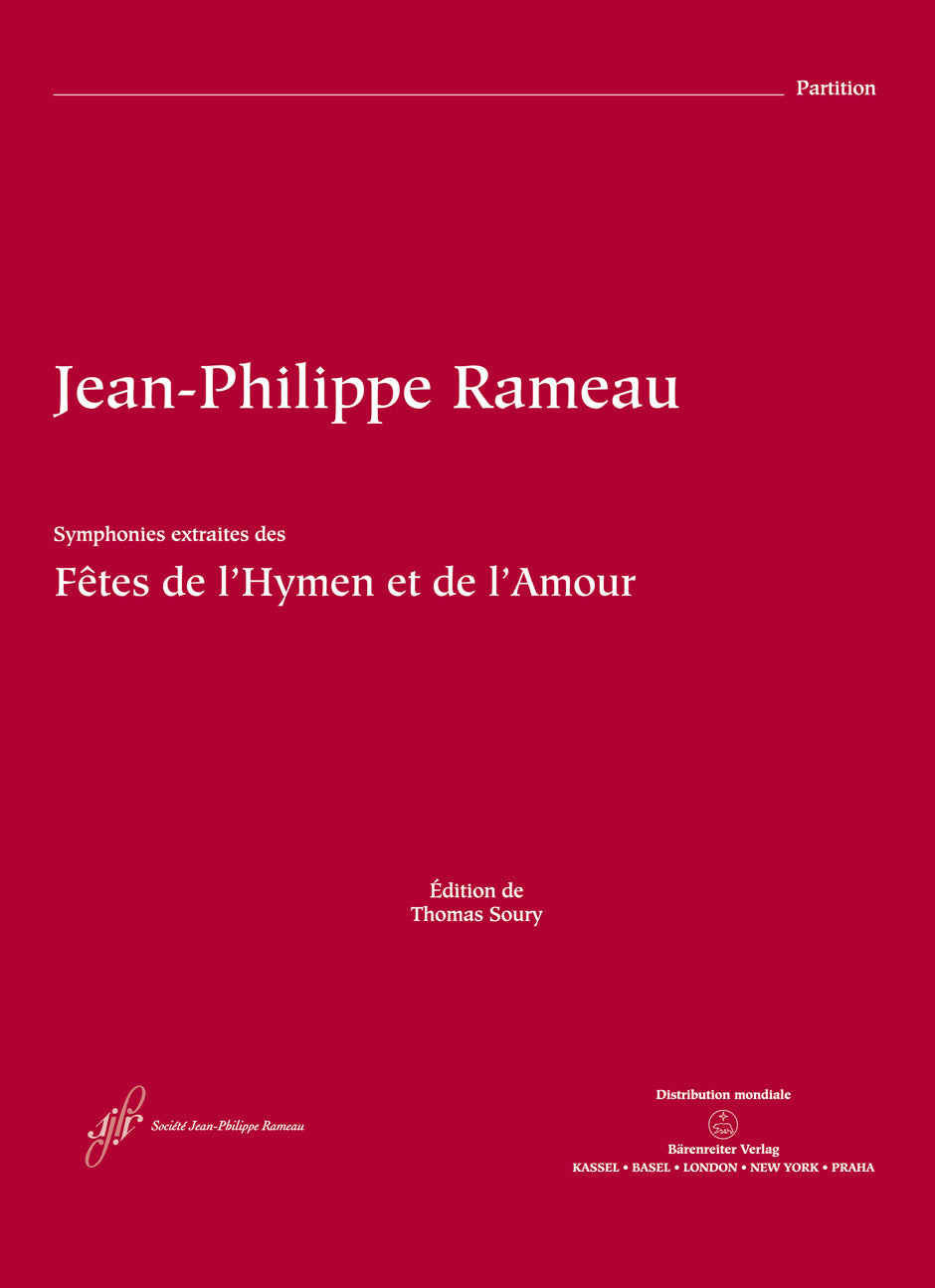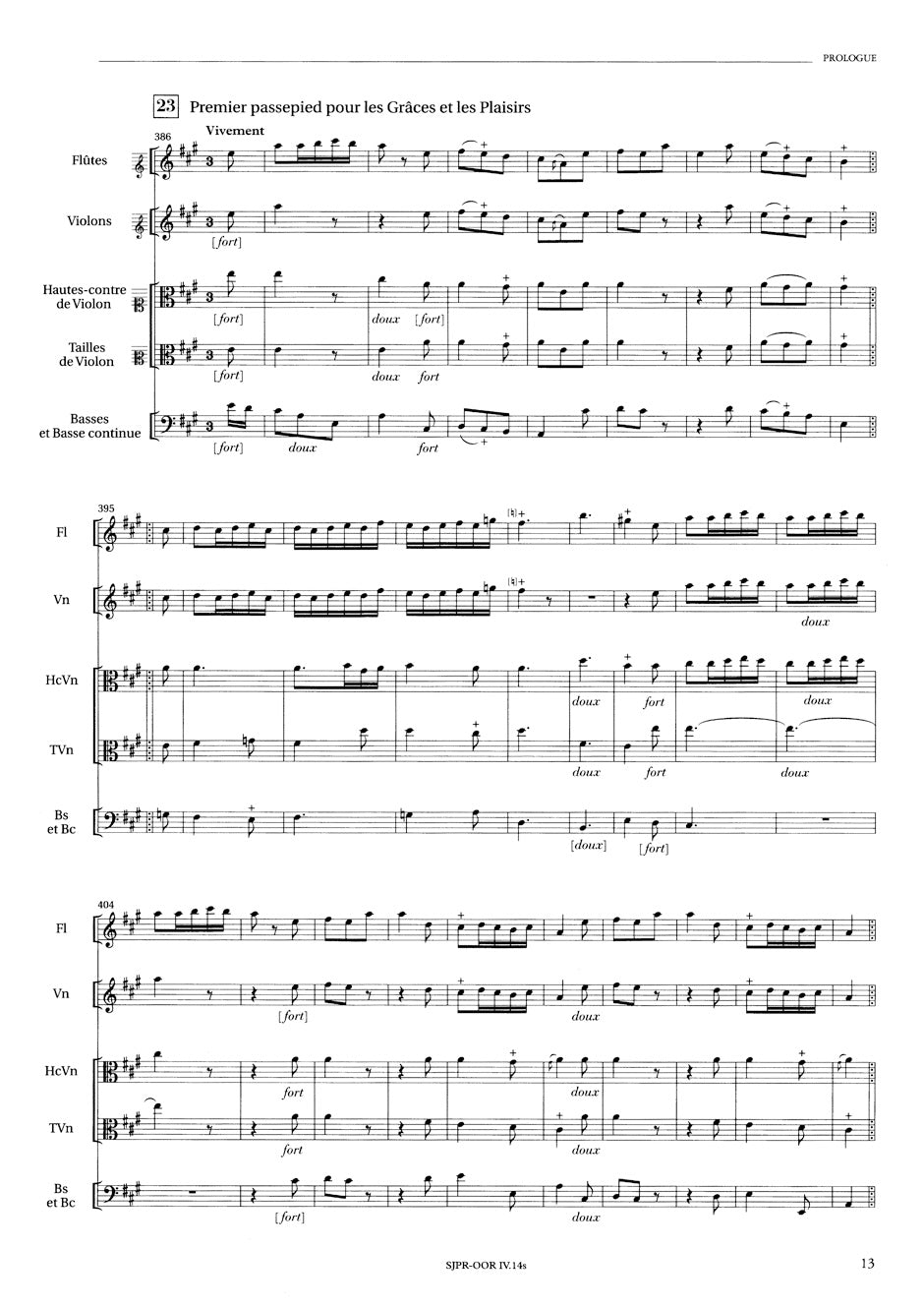Rameau: Symphonies from Les Fêtes de l'Hymen et de l'Amour, RCT 38
In stock and typically ships within 1 business day.
- Composer: Jean-Philippe Rameau (1683-1764)
- Editor: Thomas Soury
- Format: Full Score
- Instrumentation (this edition): Orchestra
- Originally for: Opera
- Work: Les Fêtes de l'Hymen et de l'Amour, RCT 38
- ISMN:
- Size: 9.4 x 13.0 inches
- Pages: 60
- Urtext / Critical Edition
Description
Rameau's "Les Fêtes de l'Hymen et de l'Amour" was long considered second-rate because its première was associated with a political event. Yet this ballet abounds in novel dramaturgical effects that foreshadow his later operas, such as "Zaïs", "Zoroastre" and "Les Boréades". Working together with his librettist Cahusac, Rameau sought to weave the dance numbers, choruses and stage machinery more tightly into the main plot. He also experimented with stylistic devices unique to this work, the most famous being unquestionably the scene in which the Nile overflows its banks (an impressive ten-voice double chorus with solo voices and orchestra) and the sextet from "Aruéris", a scoring found nowhere else in his œuvre.
For the first time, this scholarly-critical edition of "Les Fêtes de l'Hymen et de l'Amour" presents a reference version of the work that is based on all the Major sources for both the libretto and the music, including two recent musical discoveries. As most of the performance material for the première has vanished, our edition is based on the version prepared for the Académie Royale de Musique in 1748.
Publishers use a lot of words to describe what they sell, and we know it can be confusing. We've tried to be as clear as possible to make sure you get exactly what you are looking for. Below are descriptions of the terms that we use to describe the various formats that music often comes in.
Choral Score
A score for vocalists that only contains the vocal lines. The instrumental parts are not there for reference. Generally, cheaper than a vocal score and requires multiple copies for purchase.
Facsimile
Reproductions of the original hand-written scores from the composer.
Full Score
For ensemble music, this indicates that the edition contains all parts on a single system (there are not separate parts for each player). In larger ensembles, this is for the conductor.
Hardcover
Hardbound. Generally either linen-covered or half-leather.
Orchestral Parts
Similar to a wind set, this is a collection of parts. In the case of strings, the numbers listed are the number of copies included, though generally these are available individually (often with minimum quantities required).
Paperback
When publishers offer multiple bindings (e.g. hardcover) or study scores, this is the "standard" version. If you're planning to play the music, this is probably what you want.
Performance / Playing Score
A score of the music containing all parts on one system, intended for players to share. There are not separate parts for each player.
Set of Parts
For ensemble music, this indicates that there are separate individual parts for each player.
Solo Part with Piano Reduction
For solo pieces with orchestra, this is a version that contains a piano reduction of the orchestra parts. For piano pieces, two copies are typically needed for performance.
Study Score
A small (think choral size) copy of the complete score meant for studying, and not playing. They make great add-ons when learning concertos and small chamber works.
Vocal Score
A score prepared for vocalists that includes the piano/organ part or a reduction of the instrumental parts.
Wind Set
For orchestral music, this is a collection of wind and percussion parts. The specific quantities of each instrument are notated.
With Audio
In addition to the printed music, the edition contains recordings of the pieces. This may be an included CD, or access to files on the internet.
With / Without Fingering (Markings)
Some publishers prepare two copies - a pure Urtext edition that includes no fingering (or bowing) suggestions and a lightly edited version that includes a minimal number of editorial markings.





